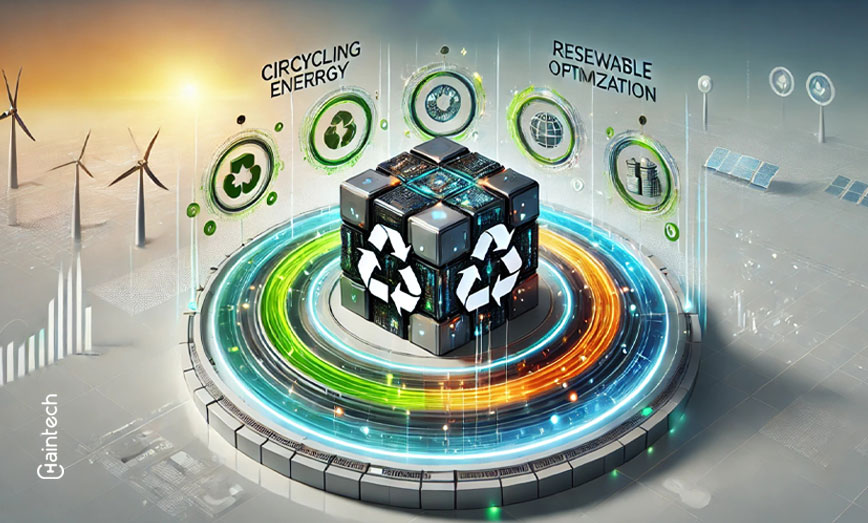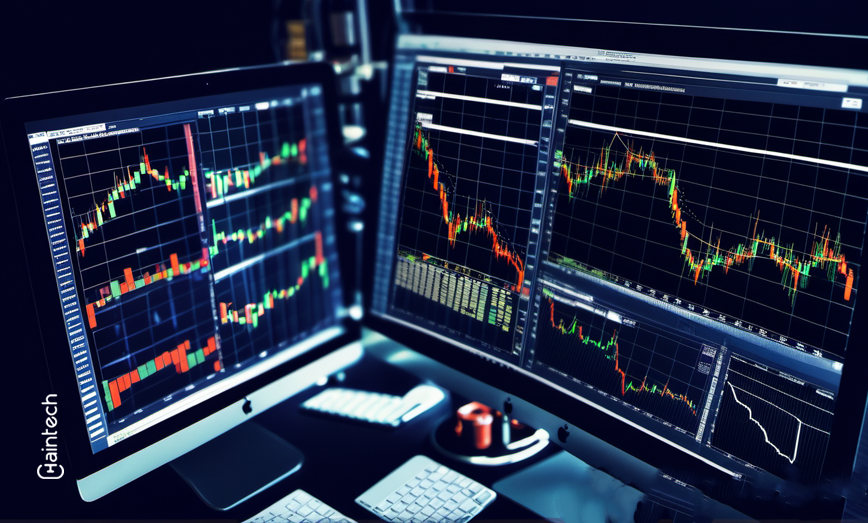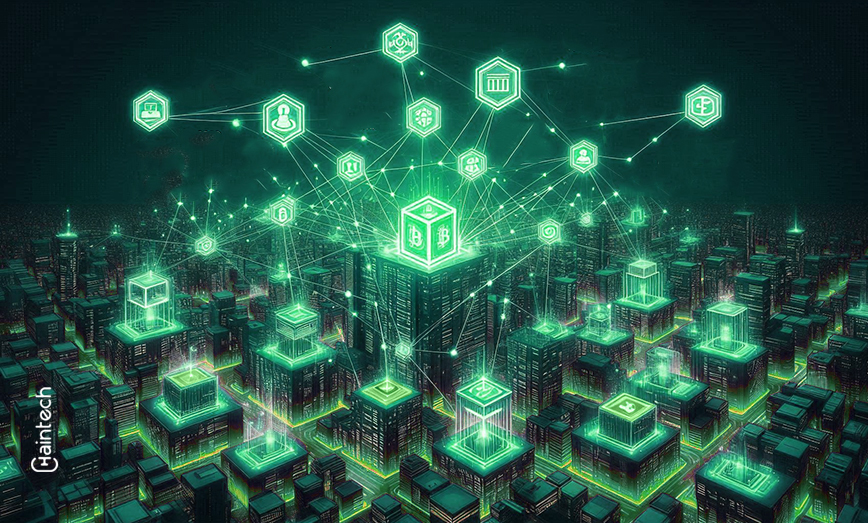How Blockchain Is Enabling a Circular Economy

Blockchain is making waves in sustainability. The least one could say in an environment where one would be able to travel everywhere or be remote, work it through sensors. But what exactly does blockchain do? How does it support a circular economy? Let’s dive in.
What is a circular economy?
A circular economy is about keeping materials and products in use. It’s a smarter alternative to the “take, make, dispose” system. Think about how nature works. A tree’s leaves fall, decompose, and nourish the soil, which then supports new growth. Nothing goes to waste.
The circular economy works the same way. It aims to reduce waste, reuse materials, and regenerate resources. Blockchain plays a big role here, ensuring products and materials are traced and managed effectively.
How blockchain enables a circular economy
Blockchain is a digital ledger. It records transactions in a secure, transparent, and tamper-proof way. Here’s how it helps:
- Tracks materials: Blockchain tracks every product’s journey. You can see where it came from and how it was made.
- Builds trust: It shows that recycled materials are authentic and ethically sourced.
- Supports collaboration: Multiple parties can access the same data without relying on a central authority.
For example, imagine buying a recycled smartphone. Blockchain ensures you know the materials were recycled responsibly.
Unique Fact
Blockchain can help save up to 20% of global food waste by enhancing supply chain transparency and reducing inefficiencies, ensuring perishable items reach consumers before they spoil.
Blockchain circular economy drives smarter business models
This isn’t just about technology; it’s about enabling innovative and sustainable business models. It helps companies transition from traditional, wasteful practices to smarter, circular systems prioritizing resource efficiency.
- Product-as-a-Service: Businesses lease products instead of selling them, ensuring items are returned for recycling or reuse.
- Peer-to-Peer Sharing: Blockchain powers platforms for sharing resources like vehicles, tools, or energy.
- Incentive-Based Recycling: Smart contracts reward consumers for returning or recycling used products.
- Asset Tokenization: Companies assign digital value to reusable materials to encourage circular practices.
For example, car manufacturers are introducing subscription services, letting users access vehicles without ownership. This approach reduces waste while giving companies control over the lifecycle of their products.
Supply chain transparency with blockchain
One of blockchain’s biggest strengths is making supply chains clear and trustworthy. Here’s how:
| Blockchain tools | How it helps in the circular economy |
| Provenance tracking | Ensures ethical sourcing of materials |
| Real-time updates | Improves decisions for all stakeholders |
| Fraud prevention | Stops fake recycled goods |
| Smart contracts | Enforces rules automatically |
| Data security | Protects sensitive supply chain info |
For example, some fashion brands use blockchain to trace fabrics. You can see if your clothing supports sustainable practices.
How blockchain circular economy reduces waste and maximizes resources
Blockchain transforms waste management by ensuring efficient resource utilization. It tracks materials throughout their lifecycle, preventing unnecessary waste and encouraging reuse. Businesses can identify inefficiencies and optimize processes using blockchain data.
- Reduces excess inventory by providing real-time tracking.
- Supports closed-loop systems for better material recovery.
- Encourages recycling by verifying authenticity and rewarding efforts.
For instance, blockchain-based platforms allow manufacturers to reclaim unused materials from products, saving costs and resources. This approach fosters a mindset of resource maximization, which is essential for a circular economy.
Blockchain circular economy empowers consumers and businesses
More and more consumers and businesses are becoming educated and clued up about the choices they can make thanks to blockchain. It connects the producer and the consumer by bringing clarity to issues.
- Consumers access product histories, verifying ethical practices.
- Businesses build trust by showcasing eco-friendly processes.
- Both parties collaborate better with shared blockchain data.
For example, when customers see recycled content verified by blockchain, they\u2019re more likely to support brands championing sustainability. This trust drives loyalty, while businesses benefit from aligning with circular economy principles.
Encouraging reuse and recycling
Blockchain does more than track products. It makes reuse and recycling easier. Here’s how:
- Tokens for materials: Blockchain creates tokens for reusable items.
- Smart payments: It rewards users for recycling materials.
- Recycling marketplaces: Platforms help people trade or sell recycled goods.
Some examples include:
- Electronics companies reusing rare metals from old devices.
- Builders recycle steel beams for new projects.
This reduces waste and encourages everyone to think sustainably.
Challenges of implementing blockchain in a circular economy
Although some businesses using blockchain for a circular economy and creating deflationary systems have multiple advantages of blockchain, there are some challenges to overcome in order to achieve the most rewarding strategy.
- High Setup Costs: Initial setup can be costly for some small and medium enterprises
- Energy Consumption: Certain blockchains, such as proof of work, have a tremendous energy requirement.
- Technical Complexity: Companies require skilled professionals to manage blockchain integration.
- Scalability Issues: Blockchains struggle to cope with large amounts of transactional volume
The same problems are addressed by later versions of blockchains such as proof of stake which is cost effective and economical in energy usage thus making it easier for industries to shift into green practices.
Real-world examples of blockchain in action
Here are some real-life success stories:
- Fashion: Blockchain helps brands like Provenance certify sustainable fabrics.
- Electronics: Dell tracks and recycles rare earth materials using blockchain.
- Food: Walmart uses blockchain to reduce waste and ensure food safety.
- Plastics: The Plastic Bank promotes the environmental practice of recycling through its tokens which are built on blockchain technology.
- Energy: Blockchain enables renewable energy. It also allows the sale of electricity directly from one person to another.
These examples show how blockchain drives real change in different industries.
Blockchain circular economy empowers consumers and businesses
Blockchain offers education, enabling consumers and businesses to make better, more responsible decisions. It connects the producer and the consumer, thus creating transparency.
- Consumers access product histories, verifying ethical practices.
- Businesses build trust by showcasing eco-friendly processes.
- Both parties collaborate better with shared blockchain data.
For example, when customers see recycled content verified by blockchain, they\u2019re more likely to support brands championing sustainability. This trust drives loyalty, while businesses benefit from aligning with circular economy principles.
Future possibilities for blockchain circular economy
Blockchain will slowly unearth its abilities in a circular model. The coming developments will take sustainable developments to another stage.
- Digital Twins: Virtual product replicas can help track and manage lifecycle stages more effectively.
- AI-Powered Insights: Combining blockchain with AI can optimize resource reuse and waste reduction.
- Global Standards: International guidelines can ensure blockchain solutions work seamlessly across borders.
- Recycling Marketplaces: Blockchain-based platforms can create thriving economies for trading reusable goods.
For instance, imagine a product with a scannable code that tells its entire history\u2014from raw materials to recycling options. This vision is becoming a reality with blockchain, paving the way for a smarter, greener future.
Making sustainability simple with blockchain
Blockchain isn’t just technology. It’s a tool for building trust, reducing waste, and creating a better future. By combining blockchain with circular economy practices, we can solve major environmental challenges.
Ready to join this change? Start exploring blockchain solutions for your business today.
FAQs
1. How does blockchain help with recycling?
It tracks materials and rewards recycling with digital tokens.
2. Can small businesses use blockchain for sustainability?
Yes, affordable blockchain platforms are available for small businesses.
3. Is blockchain environmentally friendly?
New energy-efficient models are addressing this concern.
4. How does blockchain build trust?
It provides transparent and tamper-proof data about product origins.
5. What industries benefit most from blockchain in a circular economy?
The fashion, electronics, food, and energy sectors are leading the way.









